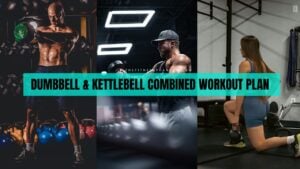If you want to strengthen a specific muscle, you’ll have to work on it – even that’s your forearms.
Building up the forearms is as crucial as strengthening your biceps or back because they help lift and press during compound lifts, such as deadlifts, bench presses, bent-over rows, and overhead presses.
You can bolster your forearms with various wrist curl variations. In this article, I’ve shared as many as six dumbbell wrist curls that will help you train your lower arms from different angles and make the entire arm firm and aesthetic.
Whether you’re a bodybuilder, powerlifter, or athlete, you can integrate the different wrist curls in your training program to sculpt your forearms.
6 Best Dumbbell Wrist Curls for Strength and Mobility

- Dumbbell Palms-up Wrist Curl
- Dumbbell Reverse Wrist Curl
- Standing Dumbbell Wrist Curl
- Hammer Grip Wrist Curl
- Single-arm Wrist Curl
- One-Arm Wrist Extension
Let’s see how to do these exercises with the step-by-step guide.
1. Dumbbell Palms-up Wrist Curl
- Grab one dumbbell in each hand with an underhand grip and sit on your knees on the floor.
- Position your lower arms on the flat bench with your wrists on the edge of it.
- Curl your wrist up until your forearms are fully engaged.
- Pause for a moment, then return to the start.
Additional Instructions: Make sure only your wrists move up and down during the movement so you can feel the maximum contraction.
2. Dumbbell Wrist Extension
- Holding a pair of dumbbells with an overhand grip, sit on your knees (next to a flat bench).
- Place your arms on the bench with your wrists on the edge of it and palms facing down.
- Curl your wrist up as high as possible so you can feel the contraction in your forearms.
- Squeezing your forearms, hold there for a couple of seconds, then uncurl your wrist.
Additional Instructions: Place your forearm on a flat surface, as it helps provide stability to your lower arms and allows you to train your muscles effectively.
3. Standing Dumbbell Wrist Curl
- Holding one dumbbell in each hand with a neutral grip, stand upright with your feet together.
- Let your arms hang straight at your sides with your palms facing your body.
- Keeping your arms still, curl your wrist (try to bring the dumbbells as close to your wrist as possible).
- Contracting your forearms, stay there for a moment, then return to the start.
- Aim for various sets until you feel the pump in your forearms.
Additional Instructions: Start with light dumbbells and increase the weight as you move further.
4. Hammer Grip Wrist Curl
- Grab one dumbbell in each hand with a neutral grip and sit on the floor next to the bench.
- Place your forearm on the bench with your wrist on the edge of it and palms facing each other.
- Curl your wrist until you feel the full contraction in your forearms.
- After a brief pause, uncurl your wrist and repeat for the desired times.
5. Seated One-Arm Wrist Curl
- Grab a dumbbell in your right hand with an underhand grip and sit on the corner of a flat bench.
- Keep your right foot flat on the ground and ensure your thigh is parallel to the ground.
- Place your arm on your thigh so your wrist is hovering over the edge of your knee.
- Twisting your wrist, raise the dumbbell as high as possible (keeping your arms still).
- Squeeze your forearms for a few seconds and slowly untwist your wrist.
- Do as many reps as possible. Then, repeat these steps with your opposite arm.
6. Single-arm Reverse Wrist Curl
- Grab a dumbbell in your right hand with an overhand grip and sit on the edge of a flat bench.
- Keep your right foot firmly on the floor so your thigh is parallel to the ground.
- Place your lower arm on your quad so your wrist is drifting over the edge of your knee.
- Extend your wrist until your forearm is entirely contracted.
- Perform as many reps as possible, then switch your arm and repeat on the opposite side.
The Mistakes You Should Avoid During Wrist Curls
- Don’t just rush. Do each rep slowly and in a controlled manner to prevent strain and injury.
- Avoid unnecessary arm movement. Focus on the muscle you are training.
- Place your forearms properly on your knees or on a flat surface. Placing your arms incorrectly will not put stress on the muscles you want to hit.
Benefits of Performing Wrist Curls
- The primary benefit of wrist curl is to strengthen forearms and improve wrist mobility.
- Sturdy forearms and wrists help you lift heavier weights in the deadlift, biceps curl, and bench press.1 Effect of 12 weeks of wrist and forearm training on high school baseball players – Journal of Strength and Conditioning Research
- Having strong wrists reduces the risk of injuries and pain that is likely to happen when you lift heavier loads during bicep exercises.
- Performing wrist curls frequently will help you gain forearm mass over time.
- Doing wrist curls also bolsters grip strength, which is needed during the various exercises, including the pull-ups, bar dips, and various pull exercises.
How Often Should You Do Wrist Curls?
Like other body parts, you can train your wrists once to twice a week. However, if your goal is to beef up your forearms, you can train more frequently.
Dumbbell Wrist Curl Alternatives
You can also reinforce your forearms with the barbell, gripper, and forearm curl machine.
Here are some of the best alternatives to dumbbell wrist curls:
1. Forearm Squeeze
You can use a spring gripper or a tennis ball to strengthen your forearms at home. To perform it, grab a gripper or tennis ball firmly in your hands and flex your fingers to squeeze them so you can feel the work in your forearms.
2. Barbell Wrist Curl
You can also use a barbell to do wrist curls. The barbell wrist curls work the same as the dumbbell curls and help you build up muscular forearms.
3. Machine Wrist Curl
To perform wrist cur on the machine, set the desired weight, place your forearms on the pad, and grab the bar with an underhand grip. Next, curl your wrist until you feel the full contraction in your forearms. And then, uncurl your wrist and repeat for the required number of times.
References
- 1Effect of 12 weeks of wrist and forearm training on high school baseball players – Journal of Strength and Conditioning Research






